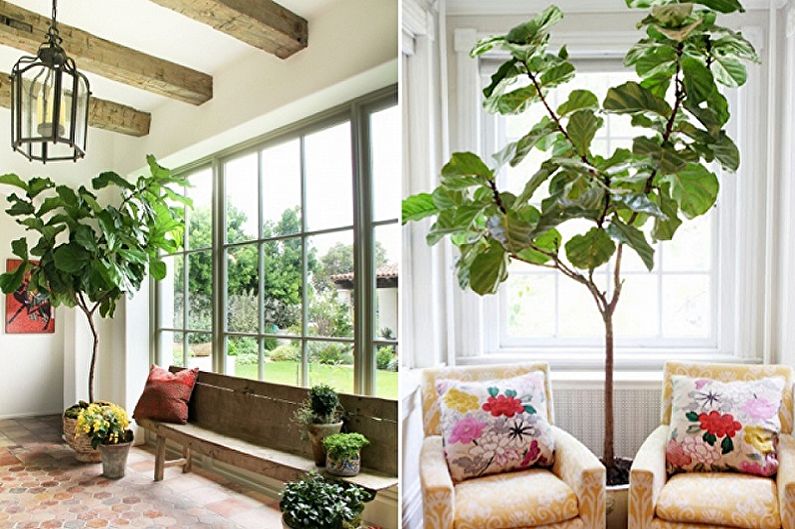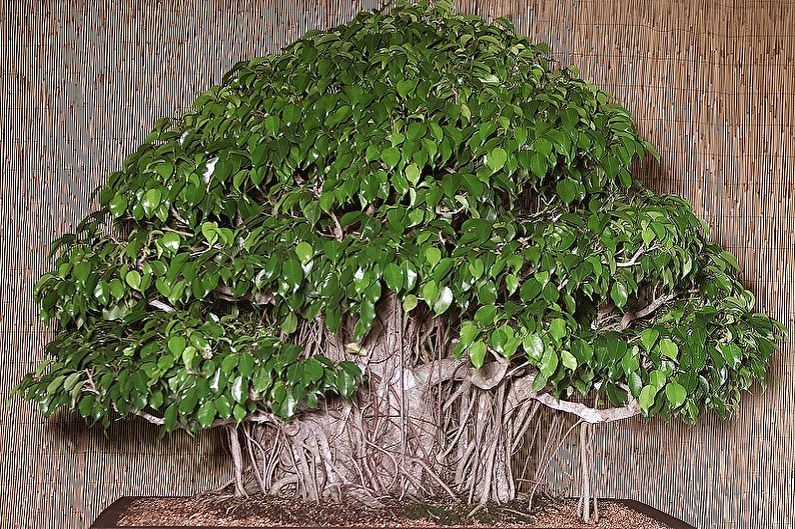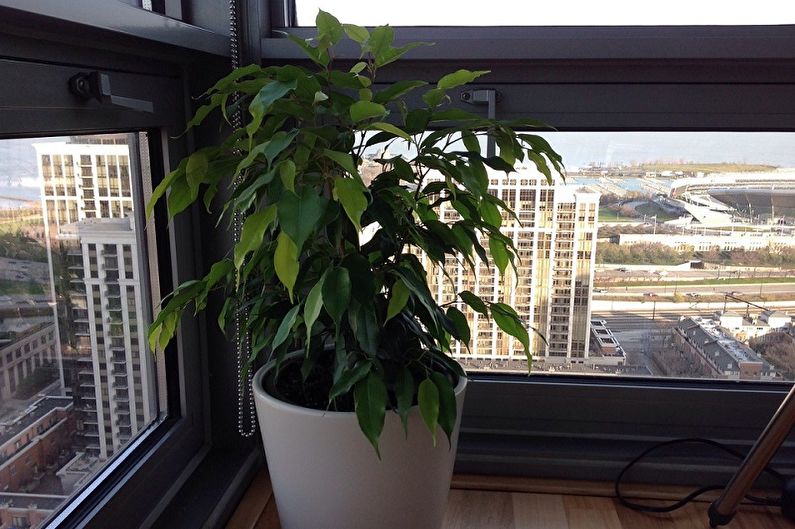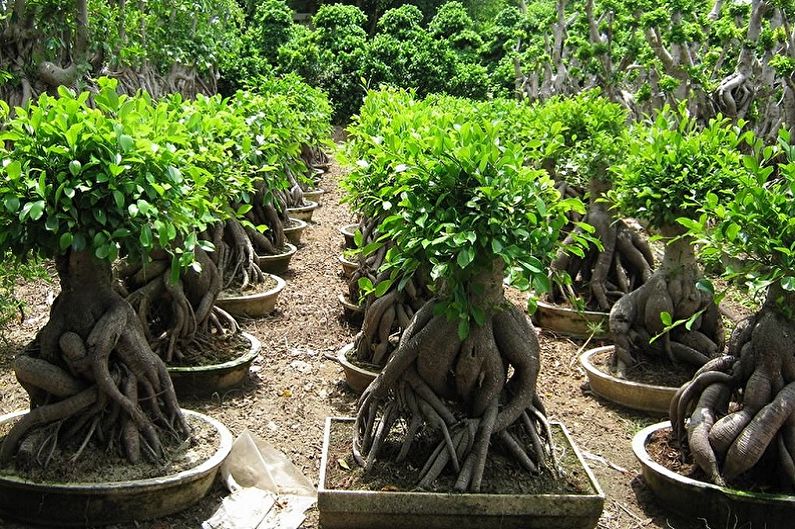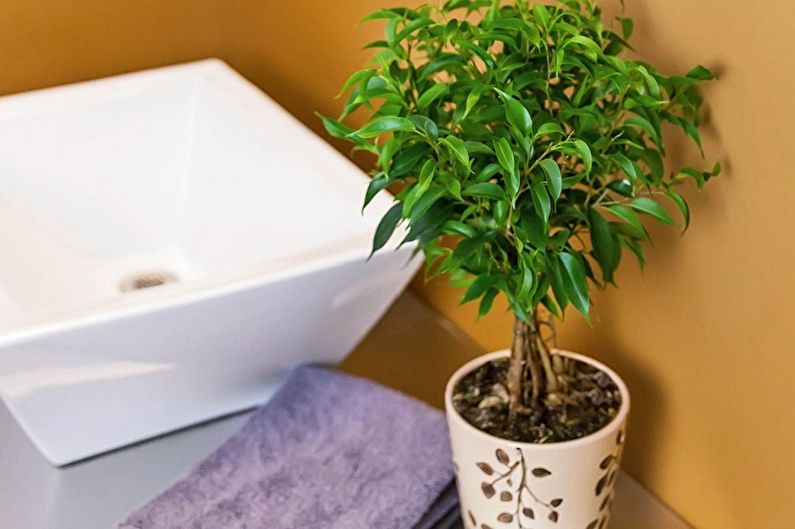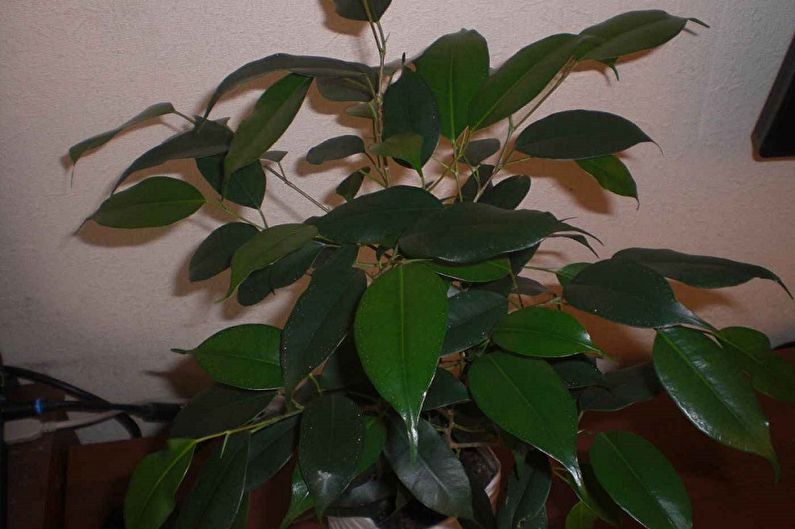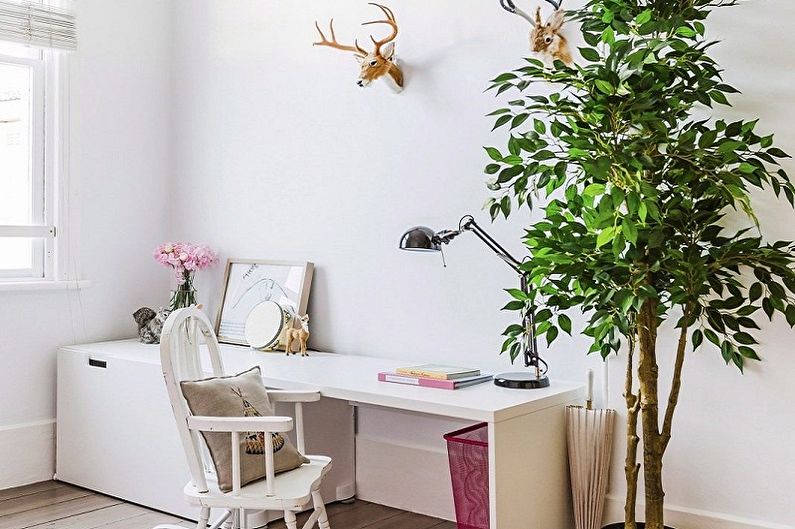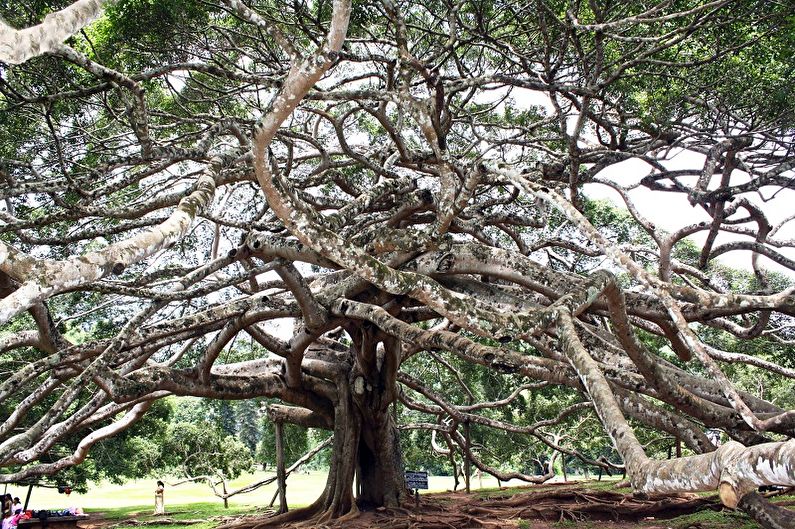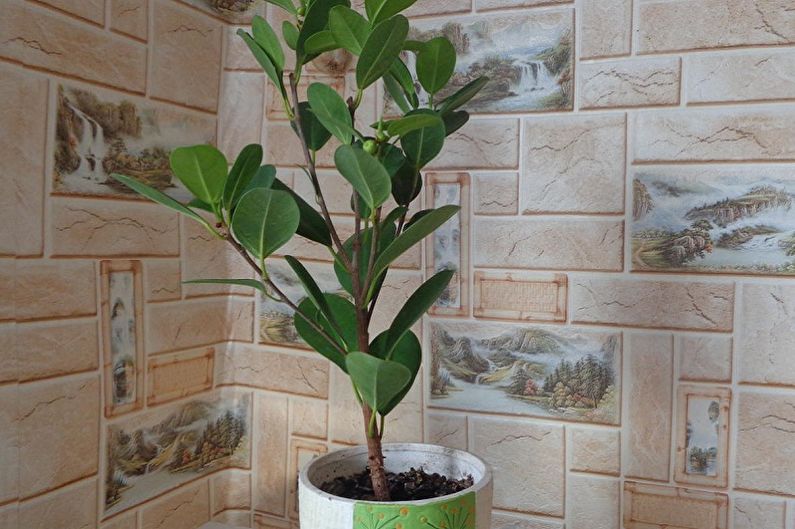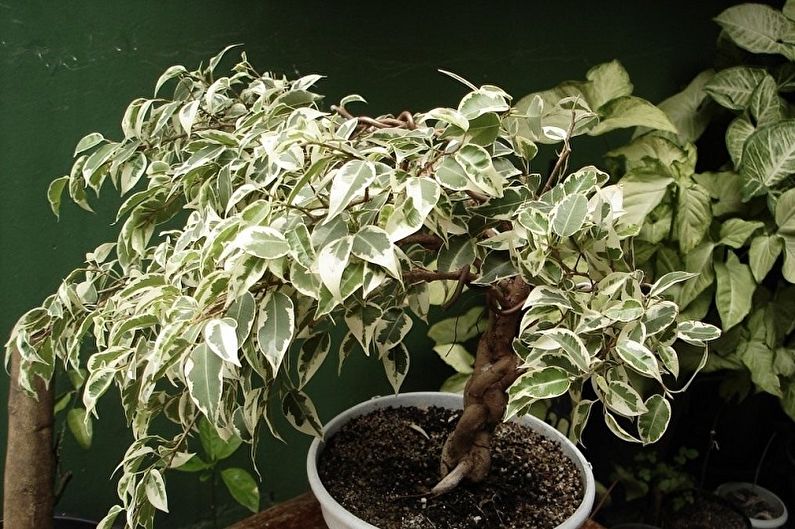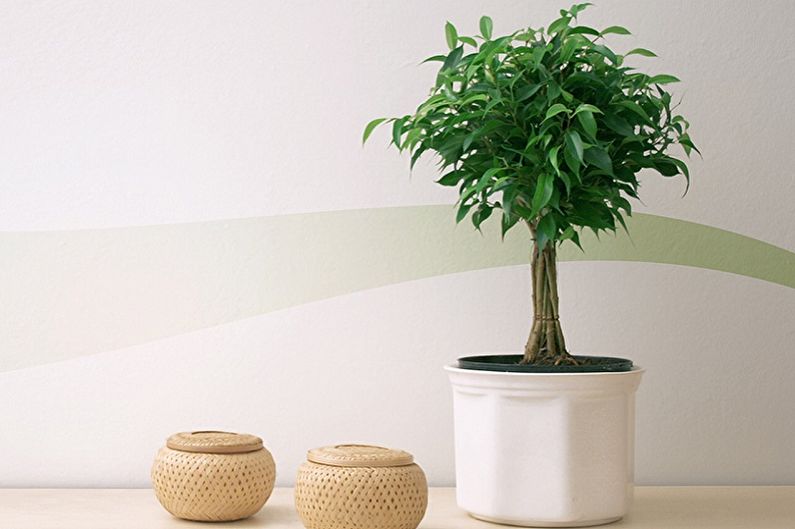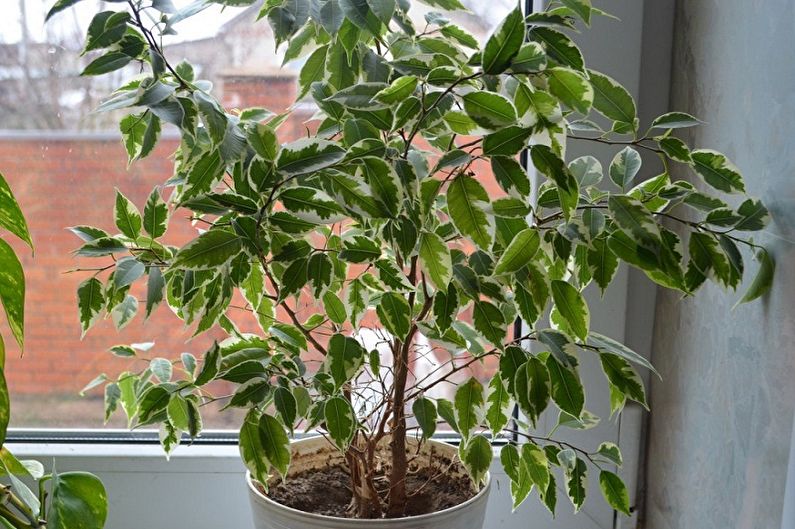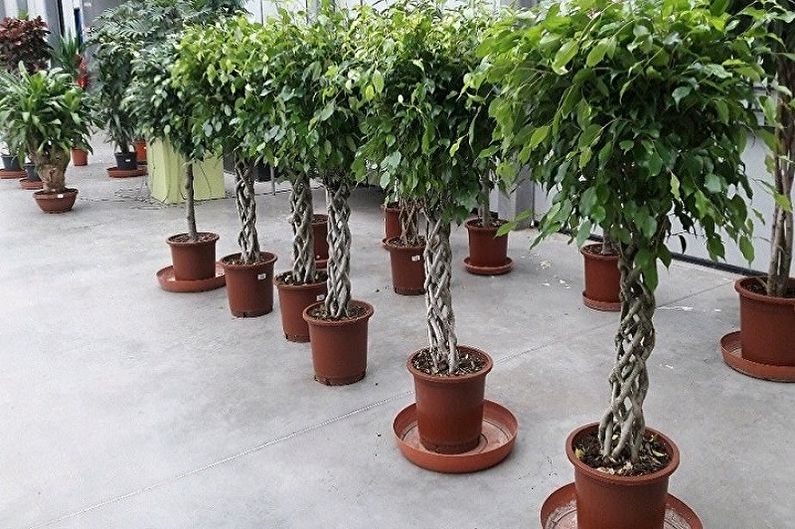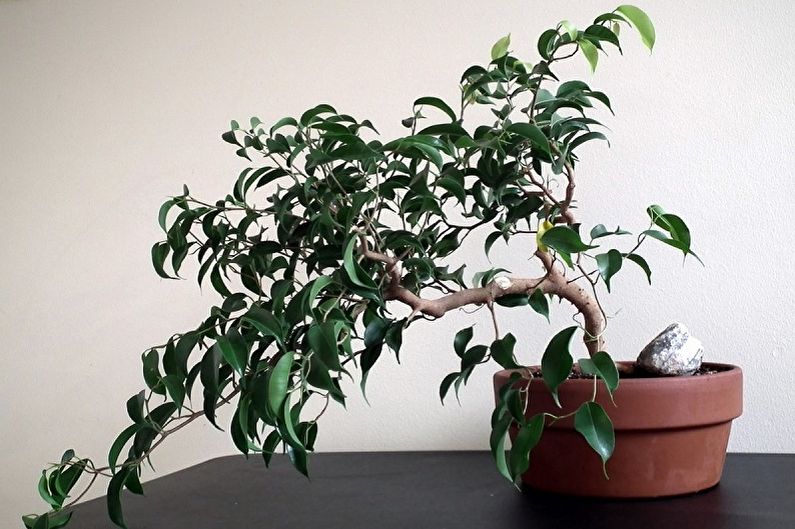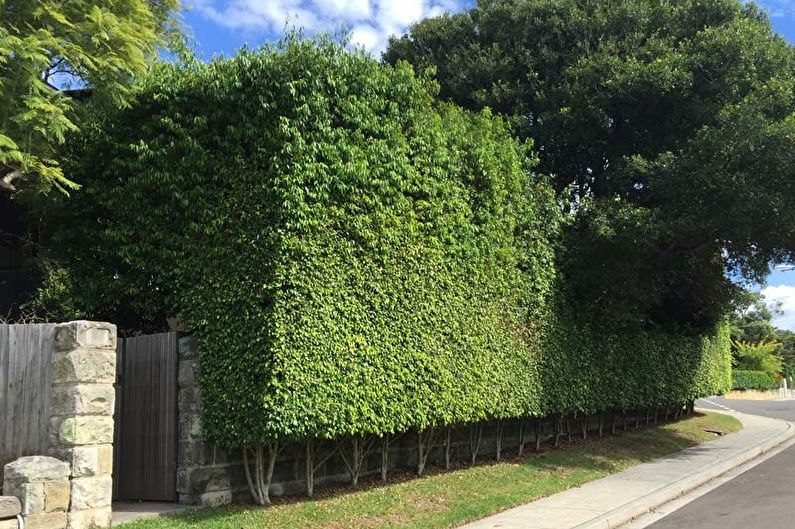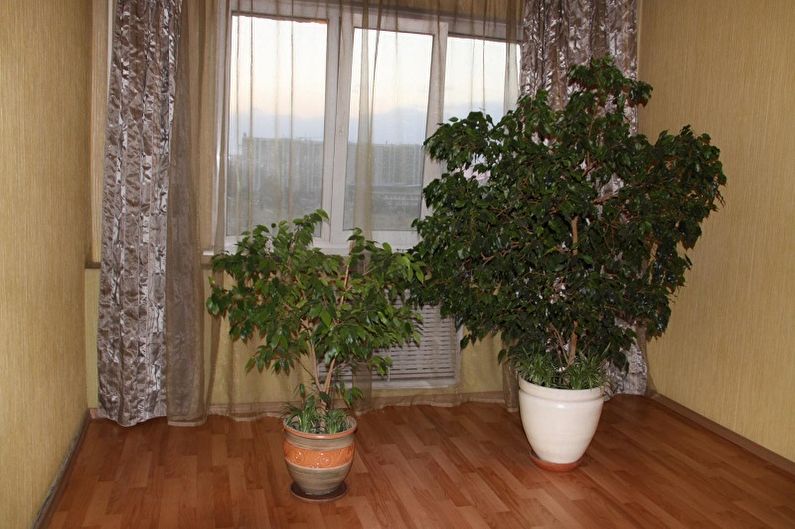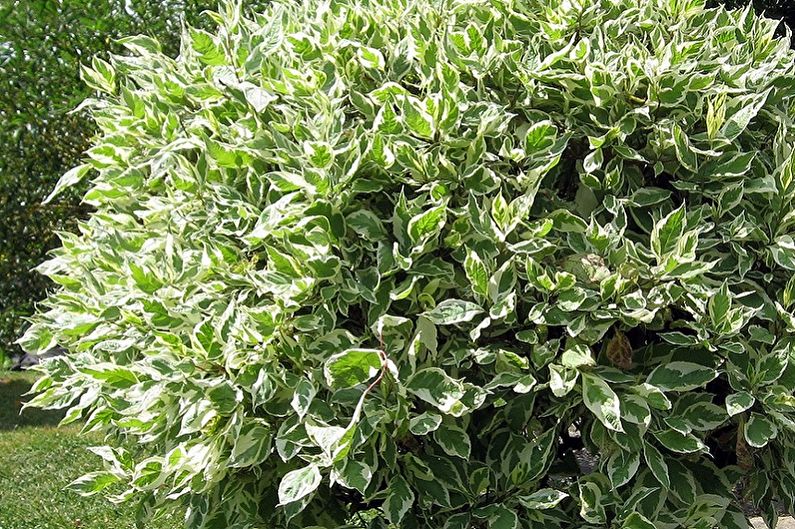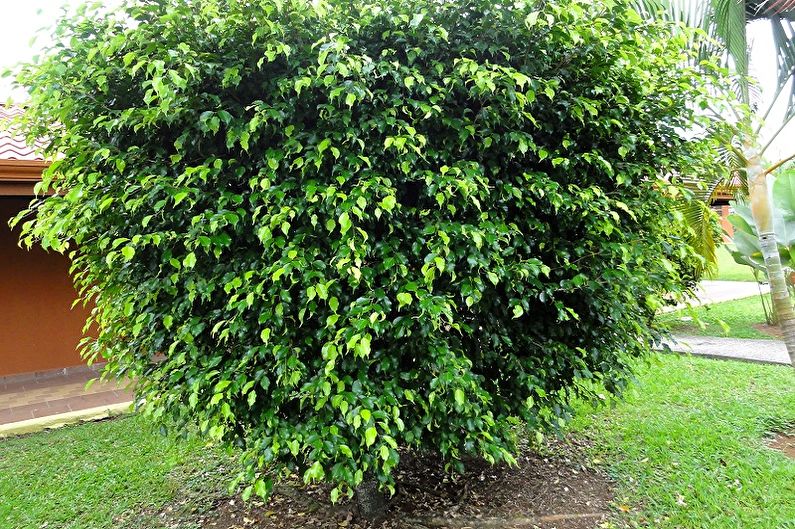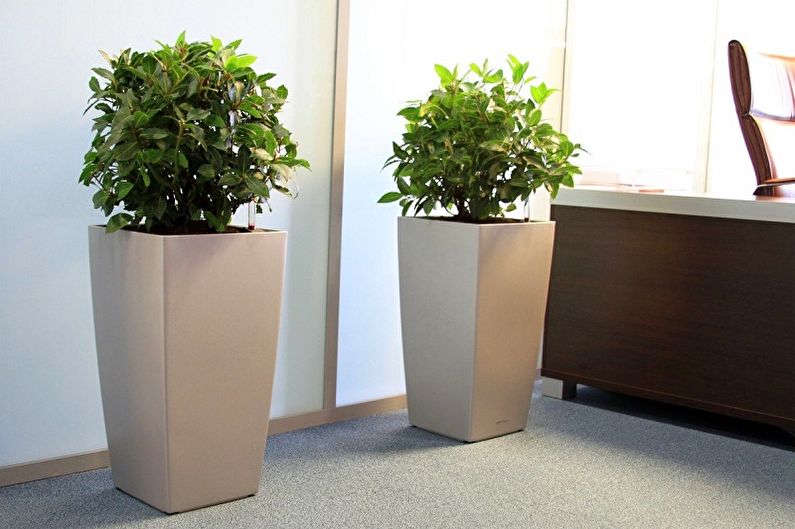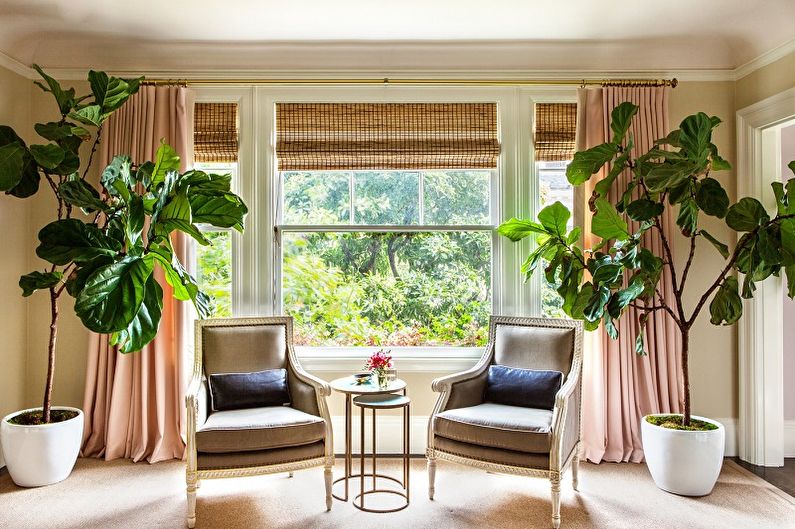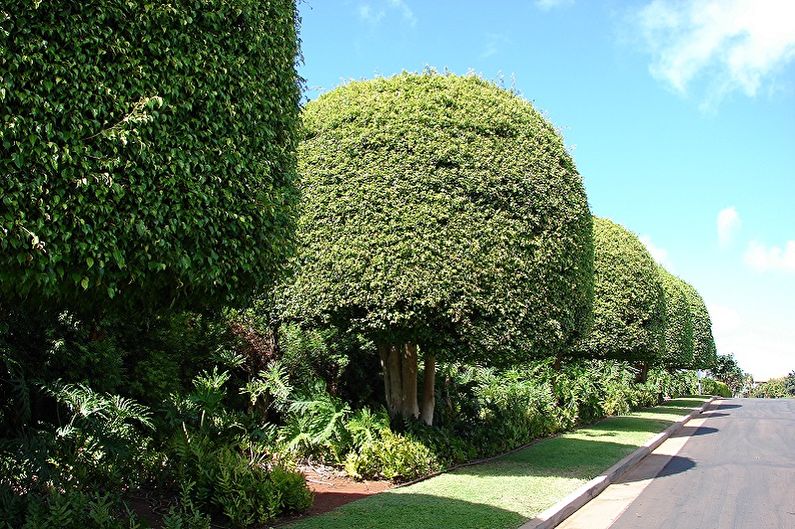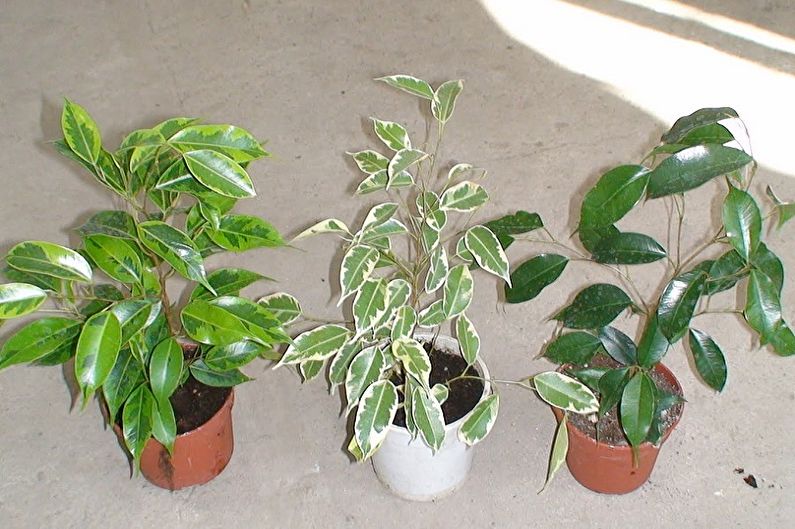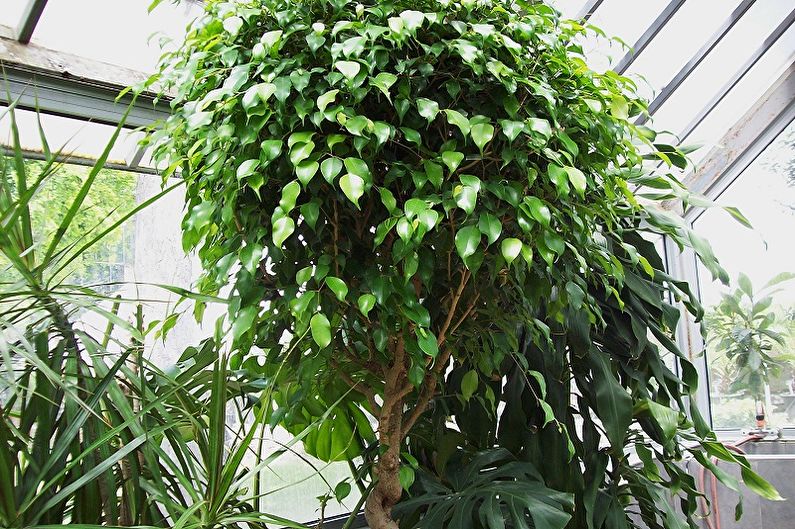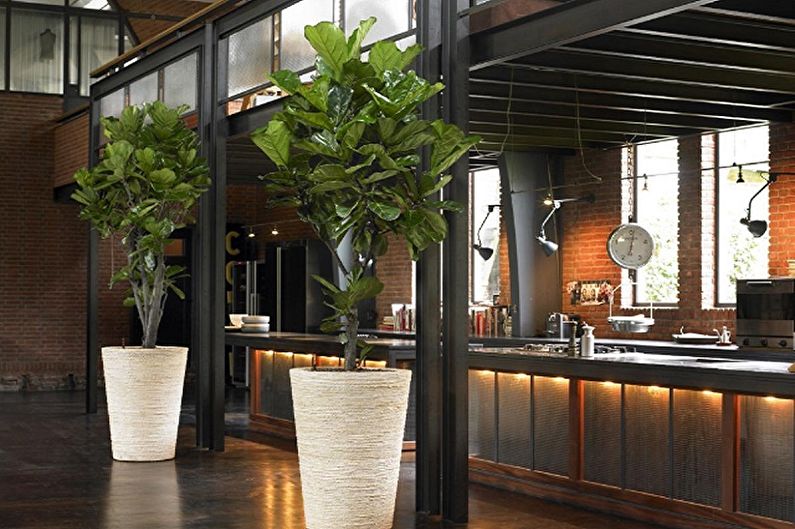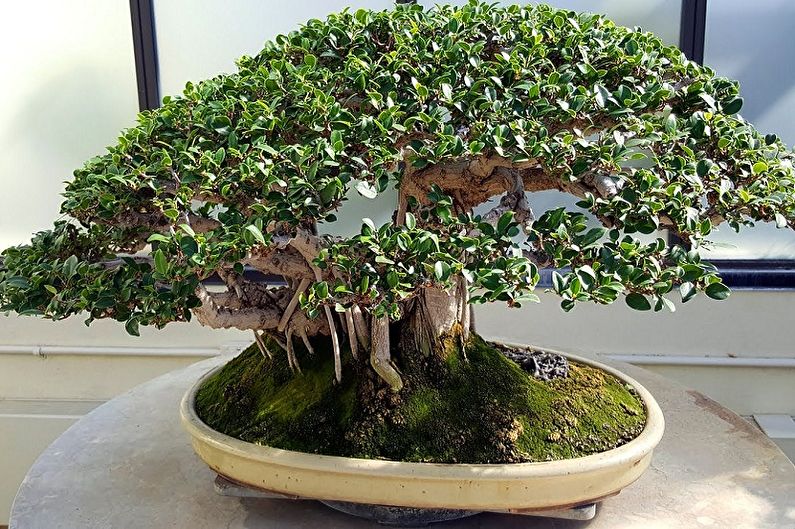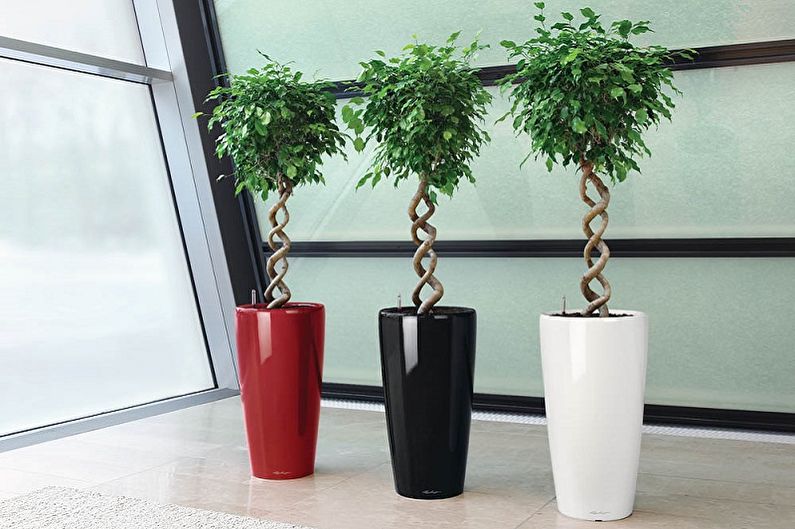
Ficus Benjamin - the most striking and popular representative of a kind. In its natural conditions, it grows in the humid tropical forests of Asia. Ficus has a variety of sizes and shapes, and in the natural environment it is able to grow up to 30 m, overgrown with branched shoots. In this case, the rhizome goes deep into the soil to a distance often comparable to the height of the trunk. In arid European countries, culture is not able to reach gigantic dimensions, but, nevertheless, does not cease to amaze with its decorativeness. The plant is grown both in open ground in personal plots and in home pots. One of the advantages is the ability to clean the air efficiently.
Types of Ficus Benjamin
The genus of ficus Benjamin has many varieties that differ in color, size, growth rate, shape of foliage and other characteristics. The structure of the trunk also has its own differences - there are multi-barreled or single skeletons, dwarf representatives, or unusually high.
Starlight
Variegated leaves are the main feature of the variety. Creamy white spots are randomly distributed over the entire surface of the sheet, which in some cases fill almost the entire plate. This is a slow-growing culture, whose growth per year is no more than 10 cm. Thanks to this feature, a variety is often chosen for indoor gardening, including forming a bonsai tree from it.
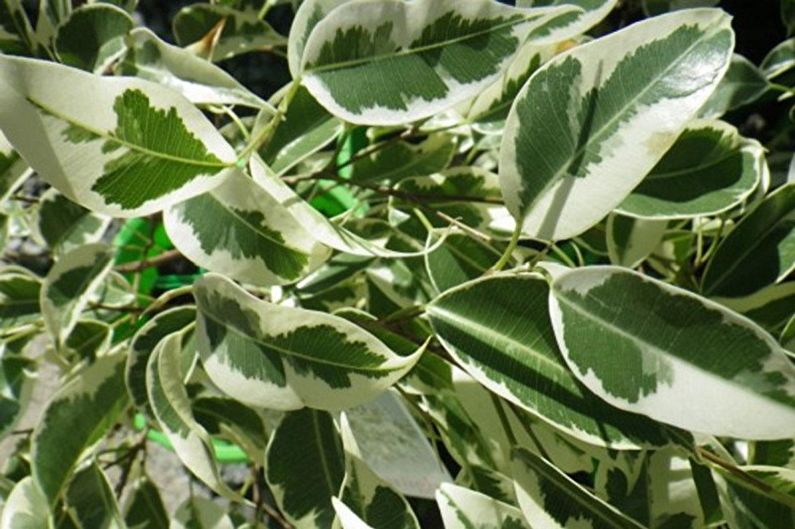
Naomi
Original decorative grade. Its main difference is round dark green leaves with a pointed end. One of the varieties - Naomi Gold - has light green foliage, complemented by dark touches.
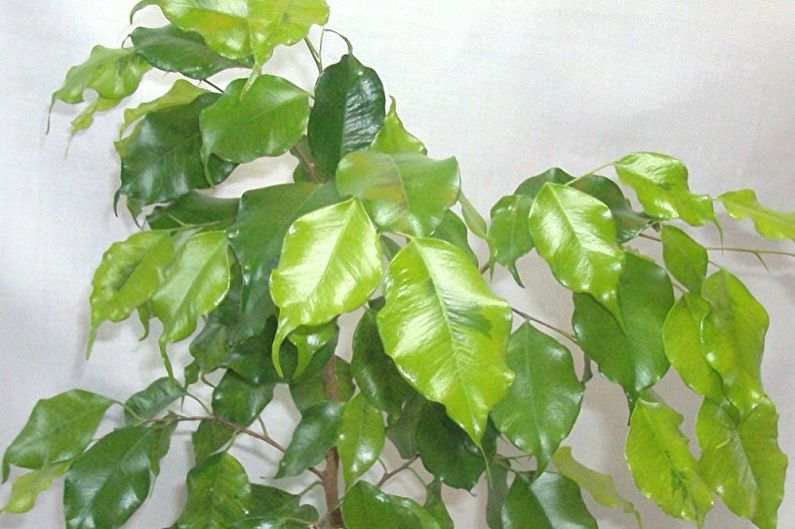
Kinky
The cheerful motley foliage of light green color with a milk border in combination with the dwarf sizes of a bush makes this species a great “green” decor for any room. He hails from West Africa and has special care requirements. But it is quite easy to trim and crown formation.
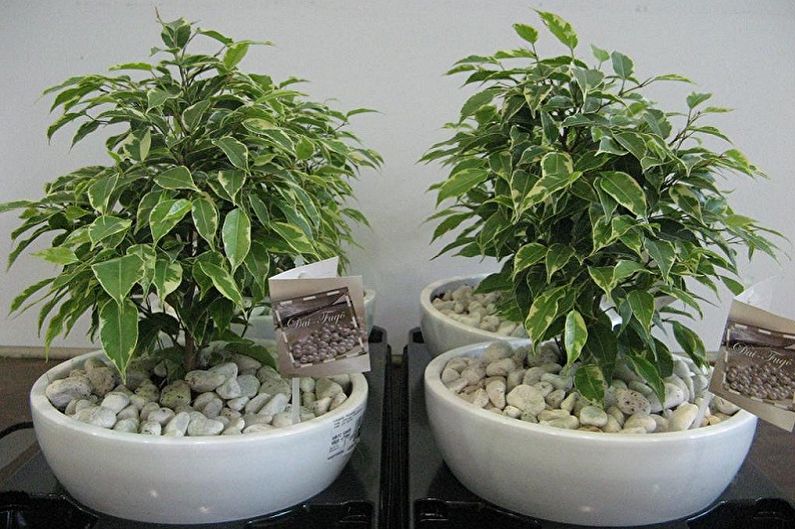
Curly
Plants of this variety differ sharply from other representatives of the ficus genus in their color. The main part of the sheet plate (sometimes all) is painted in white. Culture loves bright lighting, but is afraid of direct sunlight.

Midnight Lady
The variety of this ficus is an evergreen tree with thin hanging branches. Its leaves are special - round, rather dense and slightly corrugated. Young foliage has a bright green color, which turns dark with age. The native land of culture is North Australia and the southern territories of Asia.
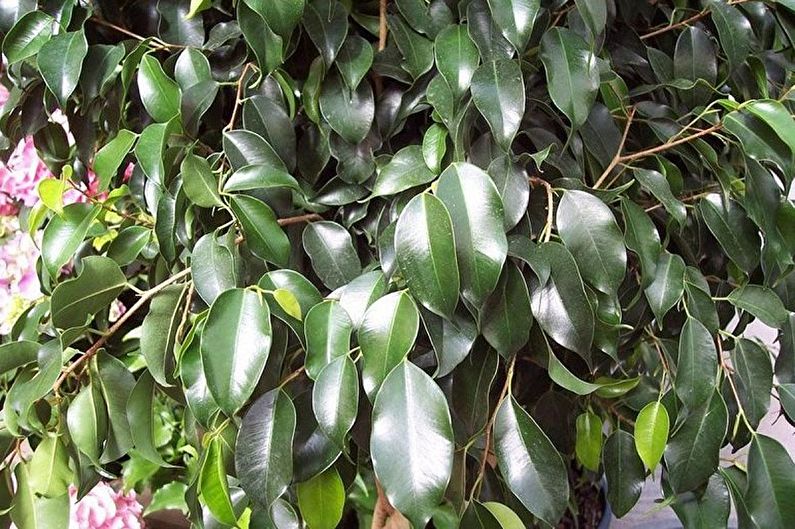
Ficus "Irene"
The plant has a special decorative effect, without fail attracting attention. Its elegant variegated folded leaves have a deep green color with a beige edging. Culture is growing slowly, being an exceptional option for phyto-interior design.
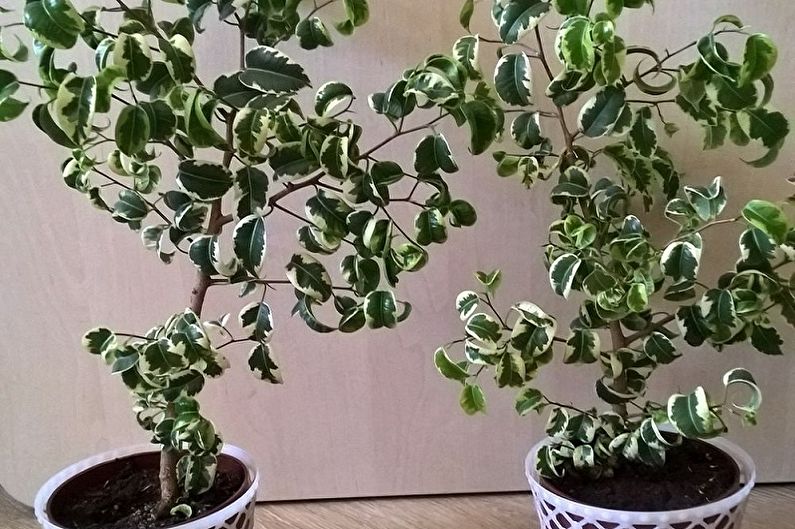
Golden Monique
Ficus with strongly corrugated edges of leaf blades. Their light green-golden color in youth is replaced by uniform green in more mature age. Dark bushes on the foliage give a special appeal to young bushes. This is one of the most stable and picky varieties.
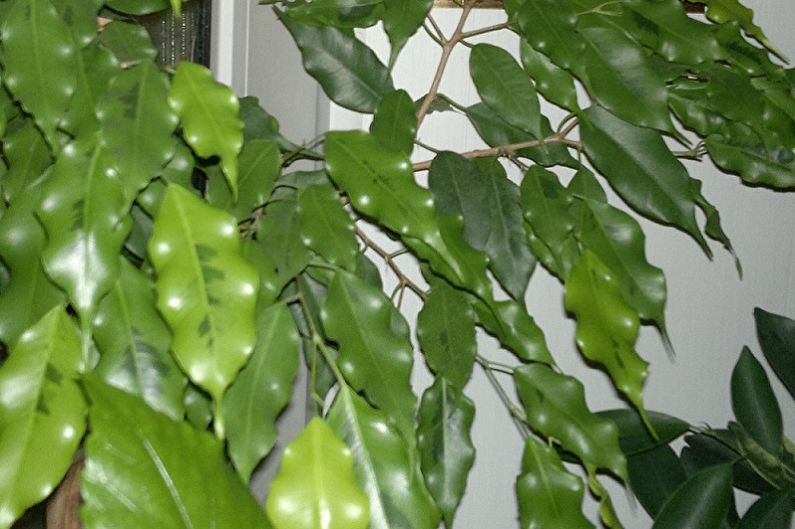
Viandi
Dwarf trees of this species can easily turn into cute miniature bonsai, which is why they are in demand. The original ficus trunk seems to bend at right angles, and the maximum height reaches no more than 30 cm. The plant can easily withstand pruning and is completely undemanding to the conditions of detention. The only thing that should not be allowed is a contrast lowering of the temperature regime and cold drafts, which entail diseases.
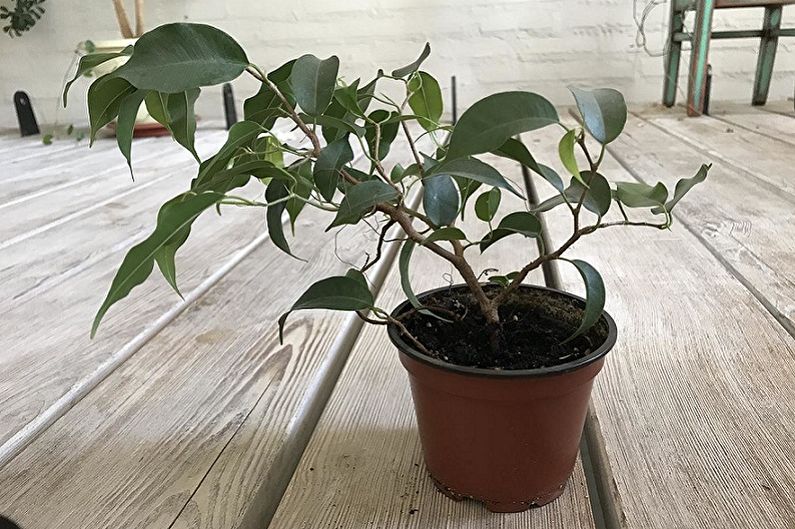
Boucle
The original representative of the genus ficus can safely boast of its unusual foliage. Each plate of dark green saturated color is twisted inward along the central vein, which is why the plant as a whole has some curliness. The variety is rather whimsical - it requires high-quality lighting and regular forming pruning.
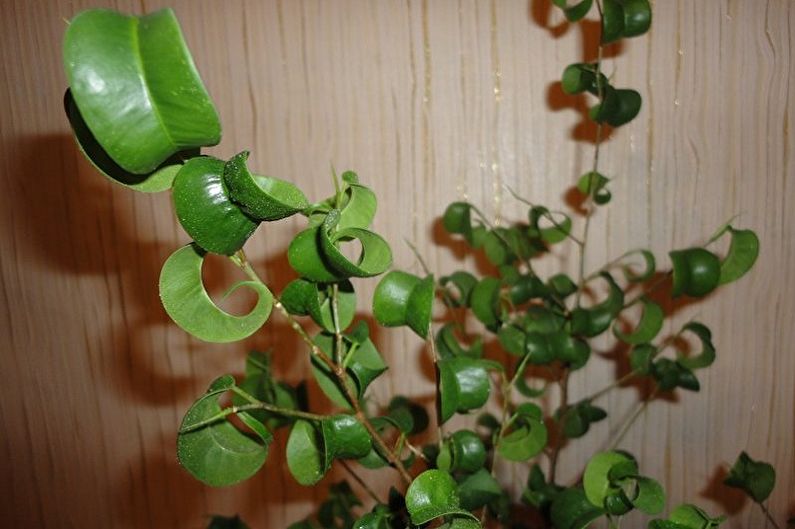
Anastasia
Distinctive features are quite large leaves, decorated with light green border and the same main vein. The variety grows quite quickly, but by regularly cutting branching shoots, it is also possible to make a compact houseplant out of it. In the warm climatic conditions of India, Northern Australia and the Philippines, you can meet huge wild representatives of this genus. Blooming in small spherical inflorescences is observed exclusively in greenhouse conditions.

Proper Benjamin Ficus Care
Ficus can be safely described as a finicky specimen who loves proper care, care and love. In compliance with all the rules in creating a favorable microclimate, he will thank the owners with his beauty and protect the house from the negative effects of the external environment.
Lighting
Ficus Benjamin belongs to the category of photophilous, especially for variegated varieties. Green species can take root in the shade, but bright lighting remains more favorable for them. A young bush can be gradually accustomed to being in direct sunlight. Rearrangement with a change of location relative to the light source can harm the plant. In some cases, this leads to dropping foliage.
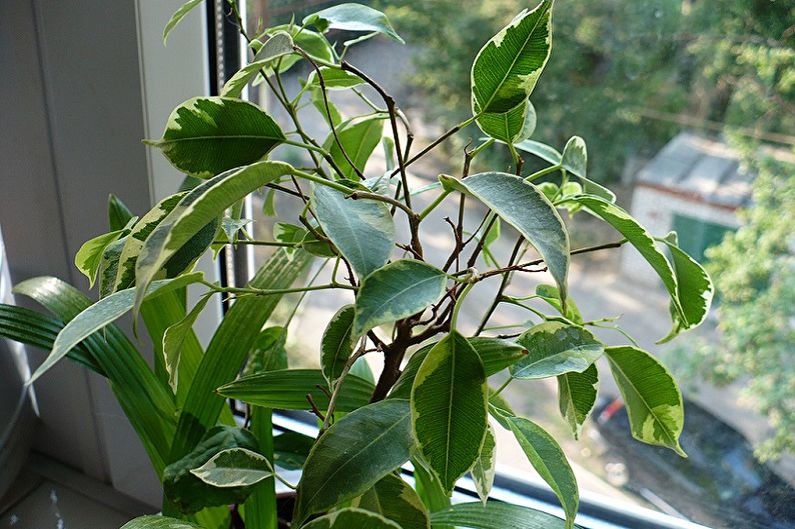
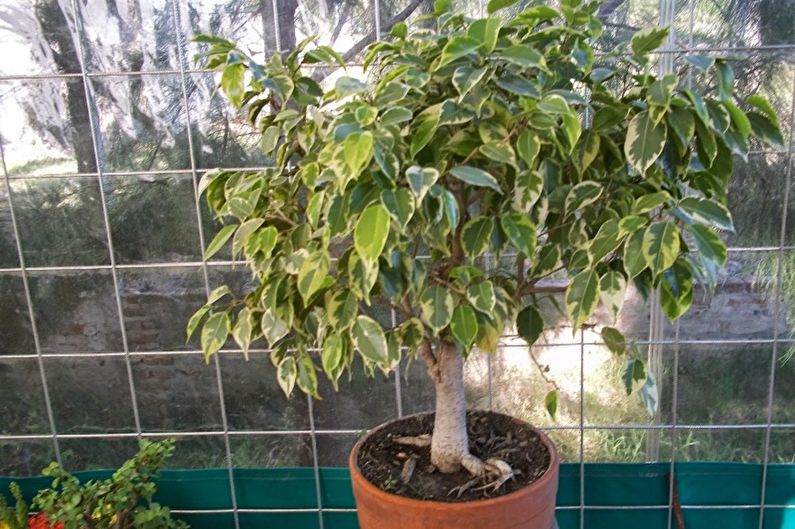
Temperature
Since Benjamin's ficus hails from the tropics, it is quite thermophilic. He feels comfortable in the temperature regime from + 25C to + 35C. The plant is able to tolerate higher degrees, but with regular spraying. Particular care is needed in the winter. It is advisable to move the flowerpots located on the floor or window sill to places where cold drafts are excluded. The optimum winter temperature is + 15C ... + 18C.
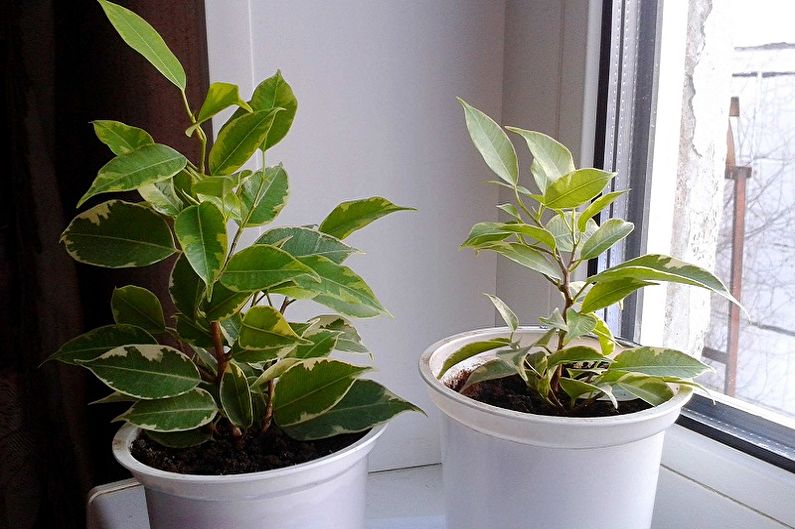
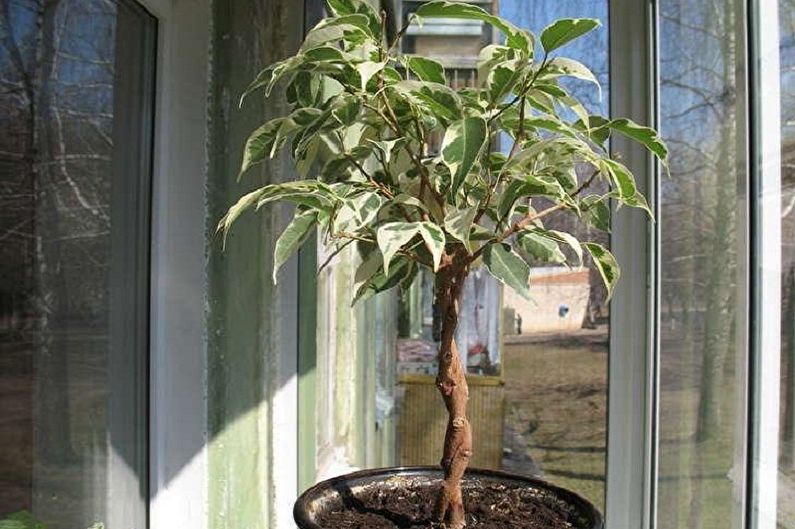
Humidity
Creating conditions of high humidity is vital for homemade ficus. In the warm season, it is sprayed daily, in winter - less often. Also, a refreshing shower is periodically arranged for the plant, which contributes to healthy development and relieves the culture of the possible appearance of spider mites, scale insects and other pests.
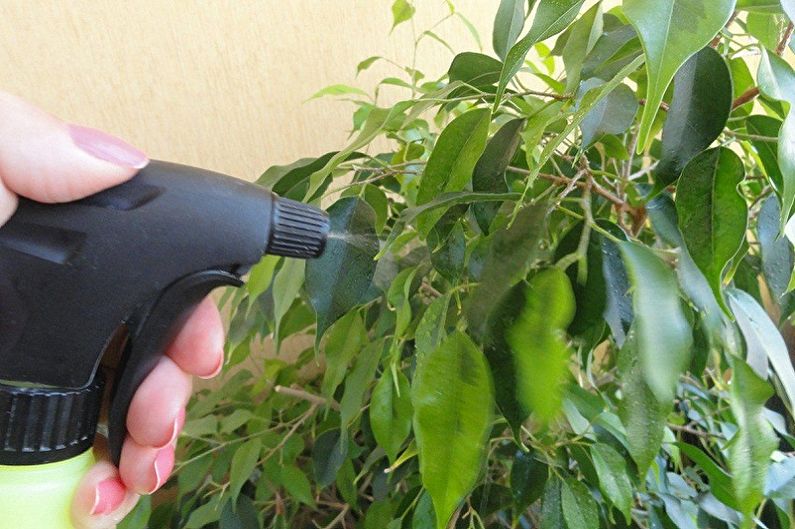
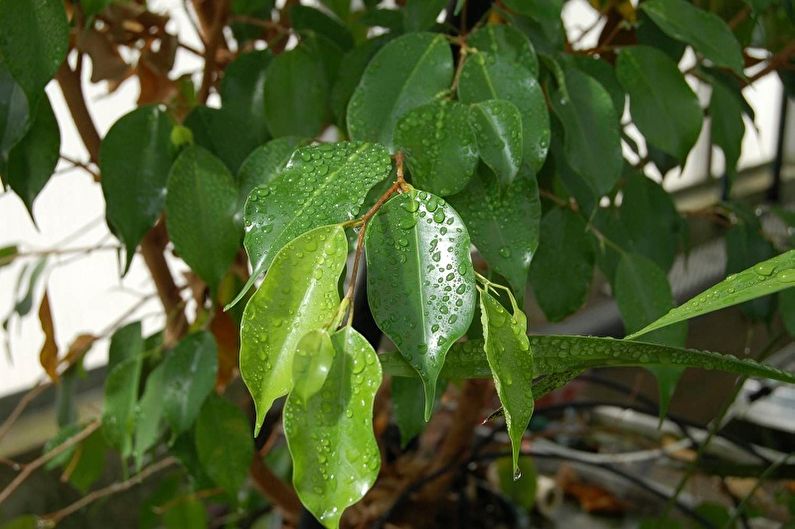
Watering
Ficus Benjamin loves water and does not tolerate drying out of the soil. Especially carefully this should be monitored during hot periods, providing plenty of drink. In winter, a weekly one-time watering is enough. When the soil dries, the bushes drop the foliage.
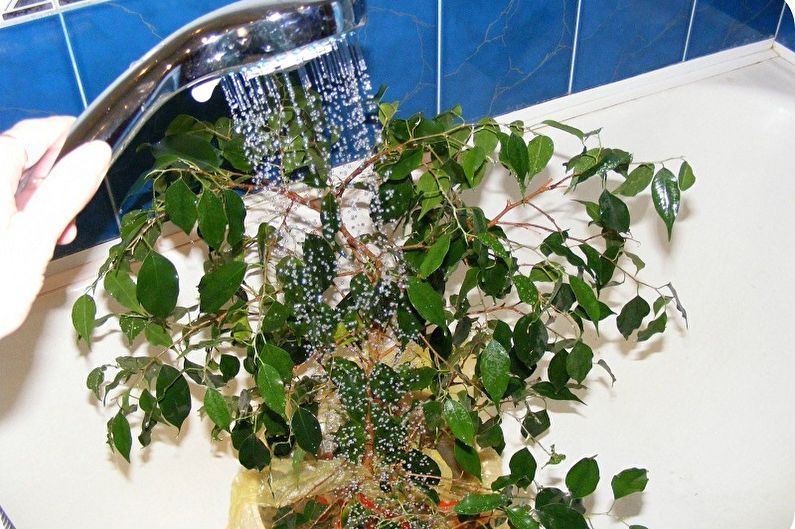

Fertilizers and fertilizing
To support the juiciness of the leaves and the successful growth of the crown, Benjamin's ficus needs useful top dressing. Starting in May, fertilizer components are applied once every 20 days, in the summer - once every two weeks. With the onset of autumn, by mid-September, feeding is stopped, as the plant should enter a state of dormancy. Resume fertilizer replenishment should begin in March, making them once a month.
Organic and mineral compounds, plant compost mixtures act as fertilizers. Particularly good influence on the growth of green mass nitrogen-containing fertilizing. You can use popular proven recipes, for example, sugar syrup, diluting sugar with water in a proportion of 1 tbsp. spoon per 1 liter of water (this is enough for two or three pots). Glucose is an excellent source of energy for the vital processes of a flower, if not overdone with doses.
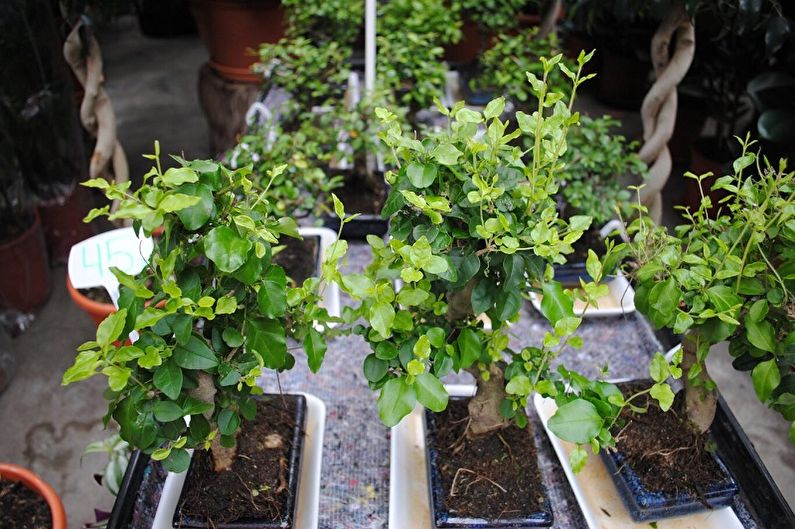
Pruning
Most varieties of ficus Benjamin need periodic pruning to rejuvenate and take beautiful forms, for example, spherical, in the form of original sculptures or in the form of bonsai. Pruning is carried out in the spring, when the crop grows particularly rapidly.It is important to use only a sterile instrument and not damage the bark. The slice is performed at an angle to the top edge.
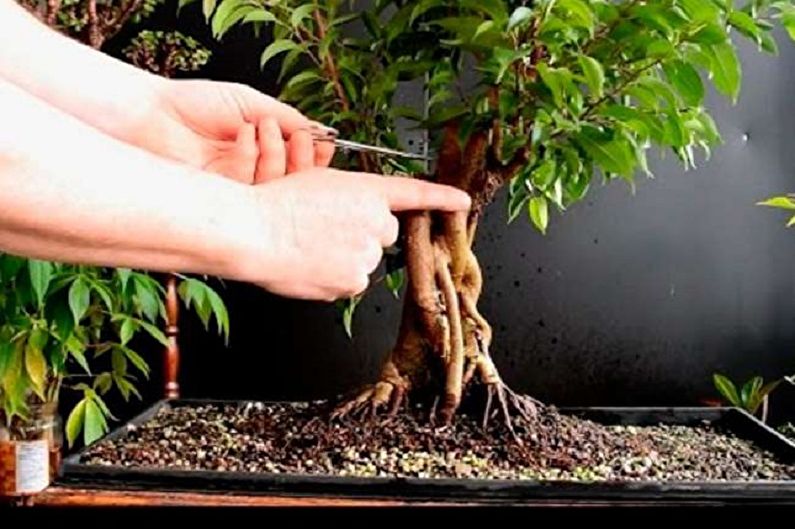
Pests and diseases
The main cause of Benjamin's ficus diseases is improper care with excessive watering, non-observance of temperature or lighting level. Lack of fertilizer can also cause leaf fall and other negative consequences. There are a number of specific ailments, namely:
- Botritis - manifested by a whitish coating on the leaves;
- Cercosporosis - characterized by the appearance on the back side of the leaf plate of dark inclusions, which then lead to withering;
- Anthracnose - expressed in the aridity of the edges of the leaves, the formation of brown spots.
If such phenomena are detected, the ficus must be treated by removing damaged segments, isolated and provided with proper care.
Among the pests that can cause damage, the most dangerous are scale insects, aphids and spider mites. You can get rid of aphids with a soap solution, and insecticides can help to remove the rest.
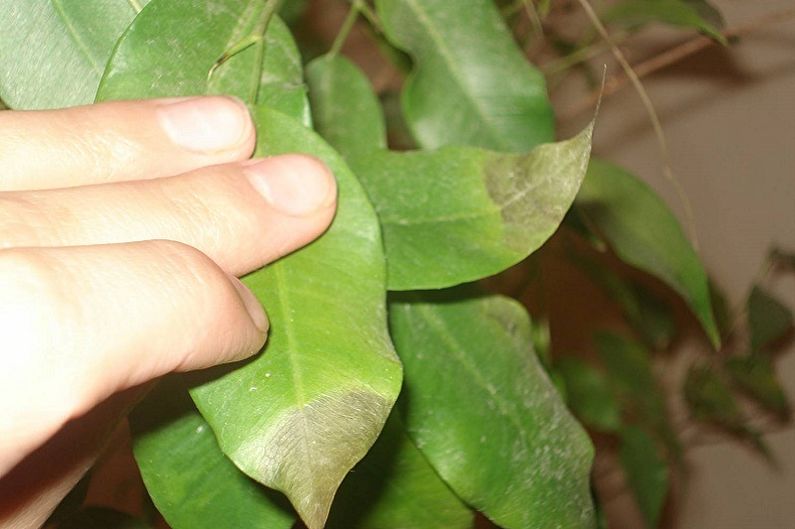
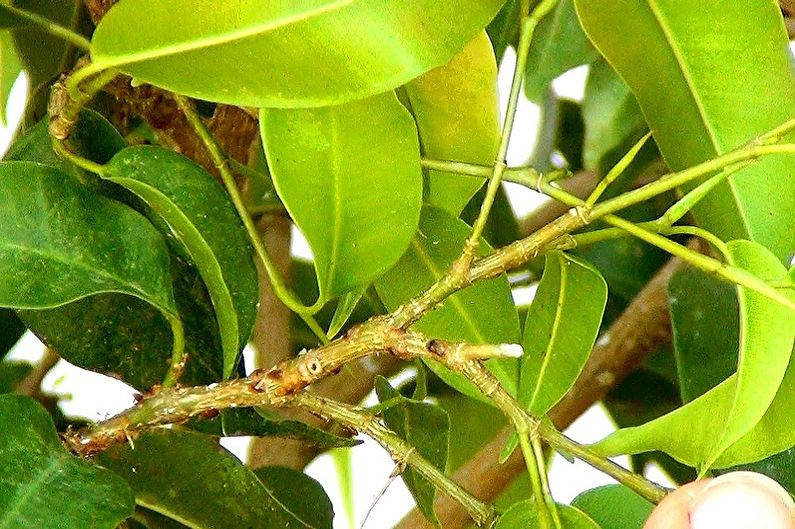
How to transplant Benjamin's ficus
Transplantation of young ficus is carried out annually. More adult plants are advised to increase the period to three years. There are times when a transplant becomes necessary, for example, if the roots have grown so much that they are visible from the drainage hole or above the topsoil.
Transplant the culture in the spring, while adding a fresh nutrient substrate and equipping the drainage at the bottom of the pot. The new capacity is taken a few centimeters more spacious in all respects than the previous one. Removing a bush or tree from the old pot, you need not to damage the root system, so the transshipment method is often used.
The first watering is carried out three days after the transplant, and in hot conditions the rooms can be resorted to by spraying.
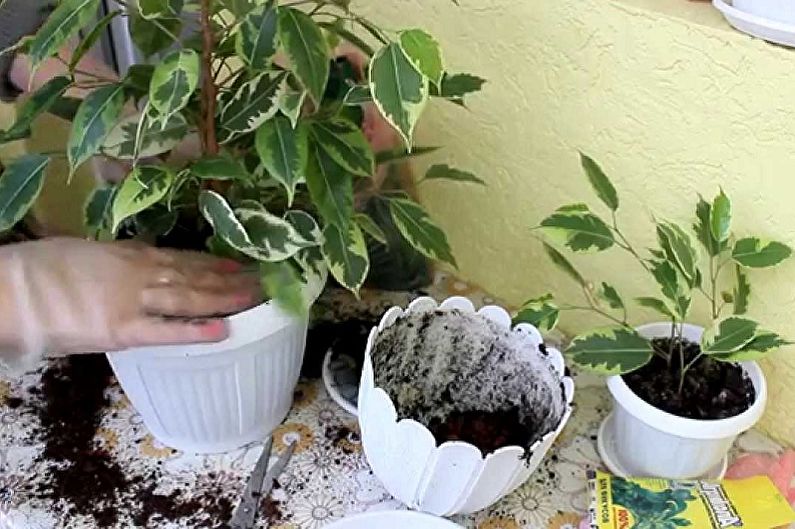
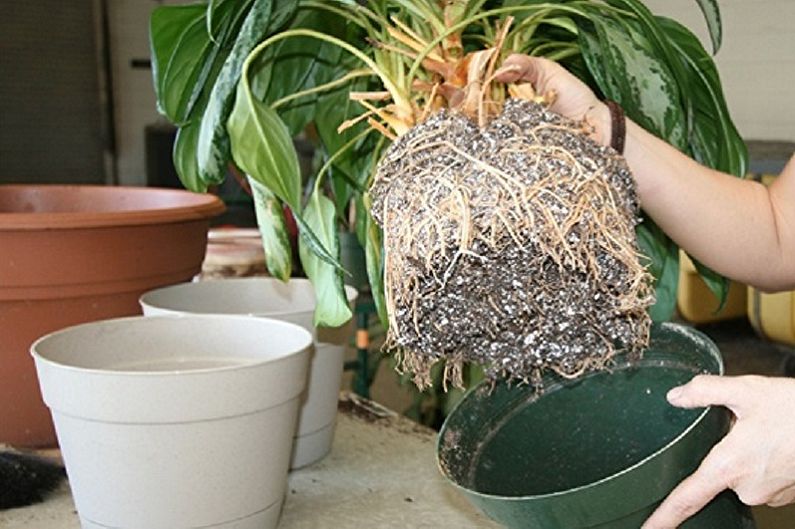
Propagation at home
To propagate the ficus of Benjamin, the method of cuttings or rooting of the leaf is used. The best period is spring-summer, when he has increased growth rates.
Propagation of Ficus Benjamin by cuttings
This method is considered the most hassle-free and reliable. Cut cuttings must be washed under a warm stream, and then placed in small containers with soil. To improve the survival process, you need to create a greenhouse microclimate. To do this, cover the landing with a cropped plastic bottle (can). Sometimes cuttings are placed not in the soil, but in water, which also provokes root growth. In this case, it is important not to forget to change the water.

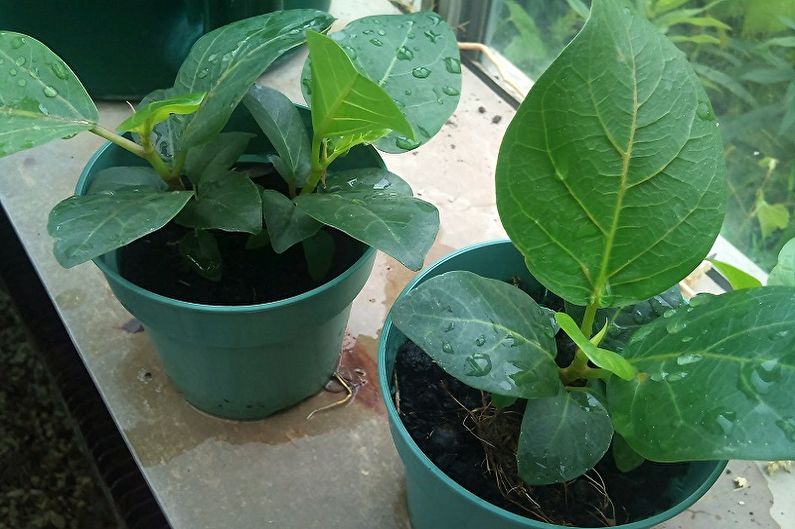
Reproduction of ficus Benjamin leaf
As planting material, leaves are taken from the bottom of the bush, which are then placed in soil or jars of water. In the latter case, you can add activated charcoal or acetylsalicylic acid to the container - this will help to avoid decay.
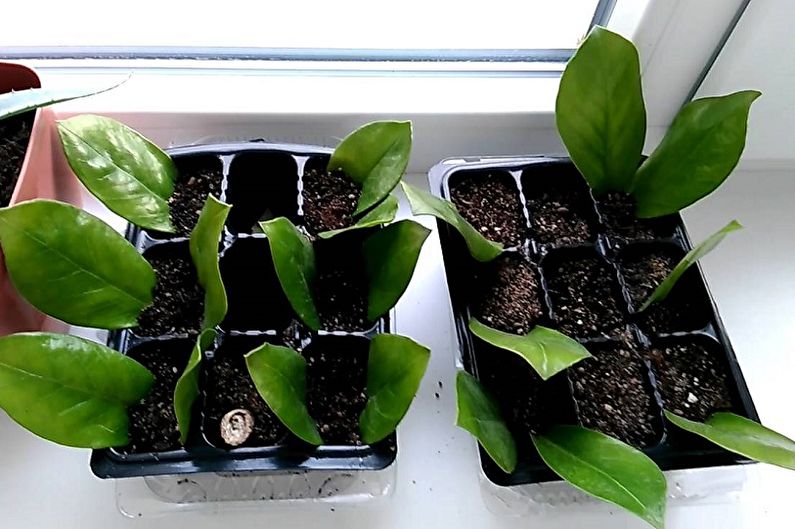
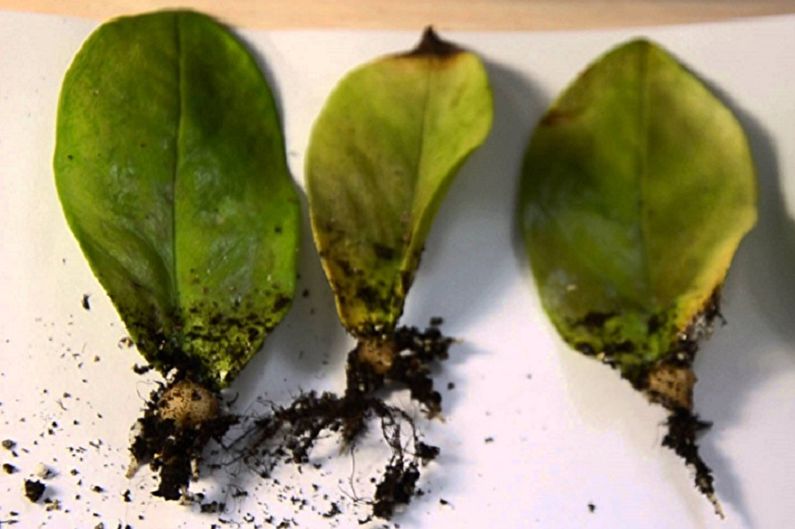
Ficus Benjamin - photo
Ficus Benjamin, which has a rich variety of varietal species with expressive foliage and original skeleton trunk, is an excellent material for phyto-design. The plant can become not only a worthy decoration of the interior, but also attract the eyes of passers-by, spreading out on the territory of the house. A selection of high-quality photos presented in the gallery will tell much more about the ficus. Enjoy watching!
